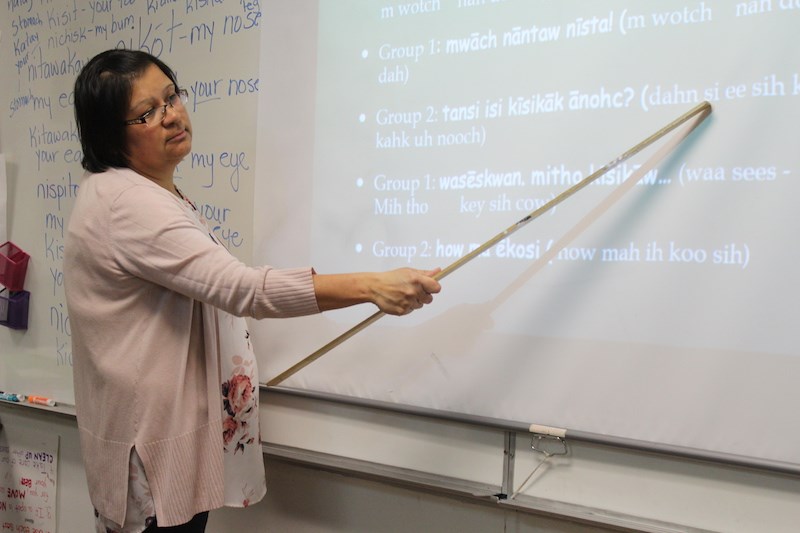Wapanohk Community School has been hosting Cree language classes for non-Indigenous adult residents throughout the last couple of weeks.
Vice-principal Celina Dumas volunteered to run the roughly decade-old program for the first time this year, and is looking to teach the language’s basics through directly engaging with her students.
“The goal is to get them speaking,” she said following Monday’s class. “I’m trying not to get them to do too much paper work, because I want them to be speaking and I’m encouraging back-and-forth banter and getting them to repeat after me.”
The April 8 class covered a lot of simple Cree words and sentences that can be easily inserted into everyday conversation, like: “I drove to Nelson House,” “When is your birthday?” and “When will I see you again?”
Dumas wrapped up this session with a game of Simon Says, where she asked each student to touch a part of their body that corresponds to the Cree word she vocalized.
According to the vice-principal, one of the toughest aspects of learning this language is getting past certain pronunciations that seem foreign to someone who only speaks English.
“You have to get rid of the English thinking and put in the Cree thinking, the Cree sounds, the phonemics of the language,” said Dumas, mentioning that her students have already made big strides. “The first day, everybody was using their hard k’s, hard t’s and I told them today that I like that I’m not hearing those English-sounding letters.”
Local accountant Chekesani Phiri said he took this class for the social benefits, since he would like converse with Indigenous members of community on a more meaningful level.
After all, according to the 2016 Canadian census, Manitoba has the third-highest concentration of Cree language speakers in the country behind Saskatchewan and Alberta.
“It’s different if you talk to someone in their mother tongue, even if it’s just a few words,” said Phiri, who also speaks Nyanja and Bemba from his native Zambia. “It sort of creates a bond that’s a little different. It’s always a good way to break down the ice and break down barriers, even though you butcher the language on the first try.”
Dumas mentioned that her classroom also includes teachers and medical professionals who think they could be more effective at their jobs if they added a little Cree to their vocabulary.
“There was a dietitian who wanted to talk more about medicine and how to have conversations with elders about their diet,” said Dumas.
The vice-principal is also hoping that this program spurs interest in Cree in a broader context, especially after years of residential schools and colonization dis-incentivized people from taking up these languages.
“In the past, they tried to get rid of all the Indigenous languages and now it’s more acceptable in today’s society,” she said. “I think with the younger generation, seeing non-Indigenous people trying to learn their language that they’ll take the initiative and try to learn it on their own as well.”
Even though they only have seven sessions left, Dumas said anybody is welcome to attend the remaining adult Cree language classes, which take place on Mondays and Wednesdays from 6:30 p.m. to 8 p.m. at Wapanohk.
For more information on this program in general, please contact Dumas directly at 204-677-6139.




